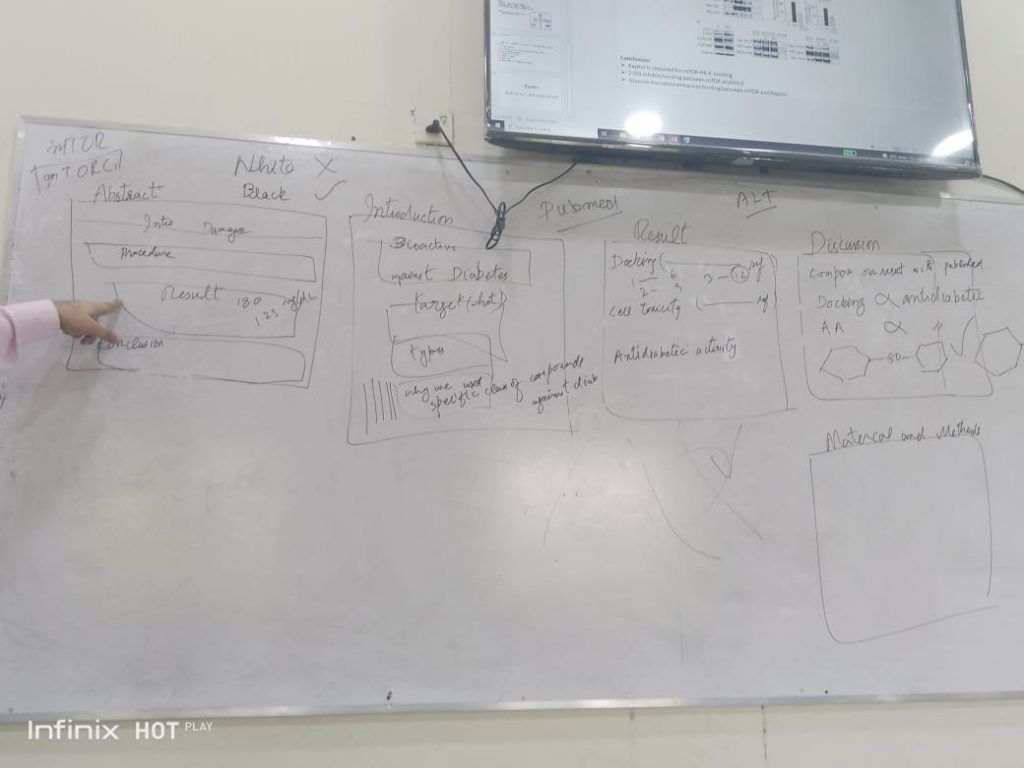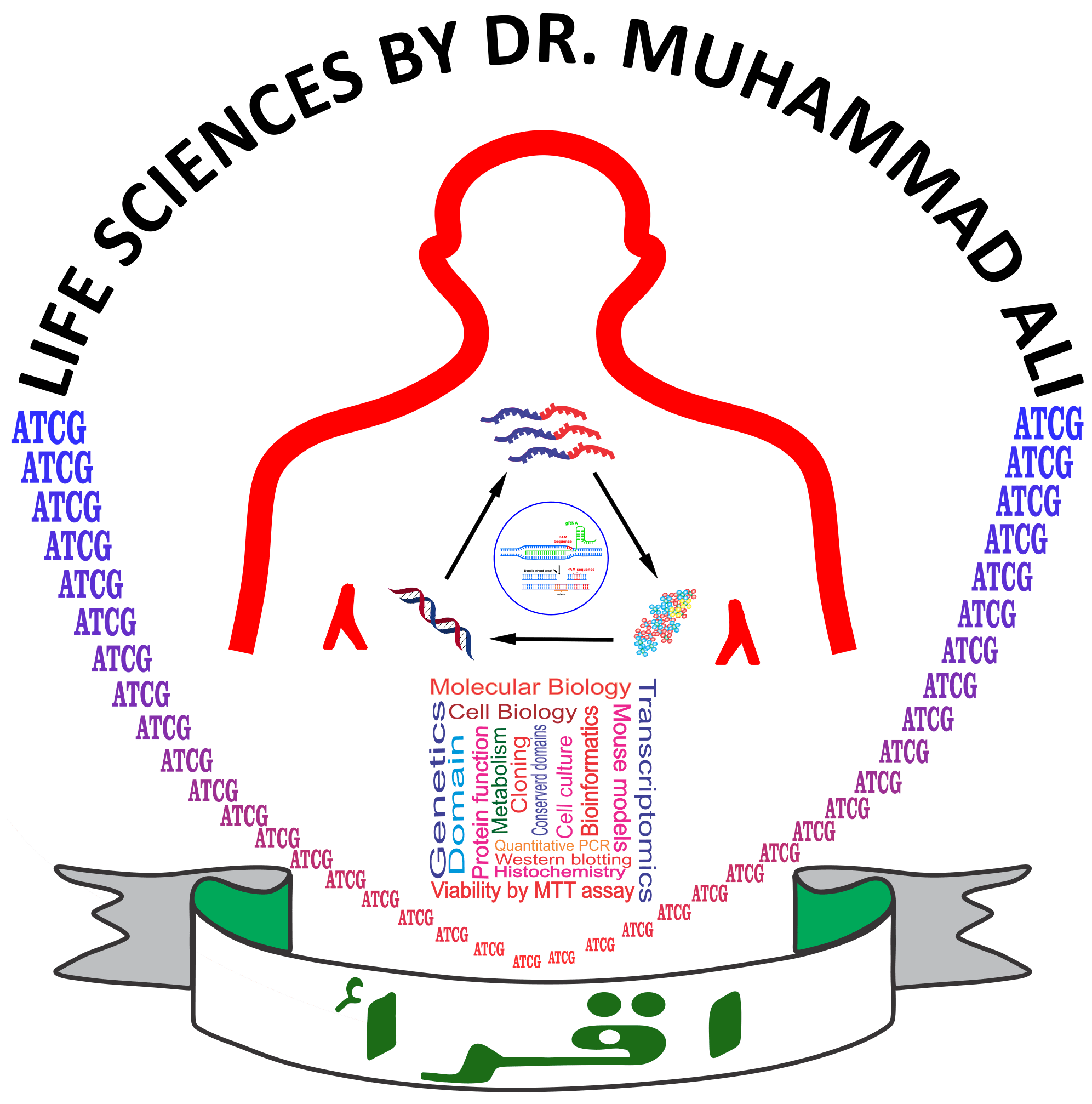Biochem-719 (Special problem)
(Dr. Muhammad Ali, Department of Biochemistry, UAF)
A) Your special problem is your perfectly written synopsis as per B and answers of 20 questions (as per D)
Your final exam (scoring) of this course will be two weeks before routine final exam.
B) Your Research Proposal (synopsis) should contain at least two of the following
1) Novelty, rationale, new or improved application
2) Technology/applied nature (drug discovery etc.)
3) Product development (kit, enzyme, etc.)
4) Gap-filling of scientific knowledge
C) Selection of compound/drug
- If you repurpose a drug you can select it according to the same signaling protein as in other disease for which it is FDA approved.
- If you want to do multi-target by targeting two proteins and want to know synergistic effect.
- If a plant is effective against a disease, its major compounds can be tested against the disease.
- Rational repurposing (mechanism-driven)
- Pick a disease pathway (e.g., oxidative stress → fibrosis) and find one drug with direct pathway inhibition and another with adjunctive, complementary mechanism (anti-inflammatory, antioxidant, metabolic modulator).
- Network pharmacology / systems biology: Use target–pathway networks to find drugs hitting different nodes of the same disease module (e.g., one drug blocks upstream signalling, the other enhances clearance).
- Phenotypic screening + hit confirmation: From a cell-based screen you obtain active hits; select two with non-overlapping primary mechanisms for synergy testing.
- In silico synergy prediction: Docking + pathway simulations + machine learning (DrugBank, LINCS, SynergyFinder) to prioritize combinations predicted to be synergistic.
- Literature gap mining (contrarian approach): Find single-drug studies that show partial benefit; pair with another drug that addresses the known shortfall (resistance, poor bioavailability, compensatory feedback).
- Targeted combination of small molecule + biologic: Small drug modifies microenvironment; monoclonal or peptide targets the biomarker — translational/diagnostic synergy.
- Pharmacokinetic complementarity: Choose drugs with compatible PK (no antagonistic metabolism) to facilitate co-dosing and translation.
- Safety/profile complementarity: Pair a potent but toxic agent at low dose with a protective, well-tolerated adjuvant to widen therapeutic index.
How to write the rationale and justification (concise template)
Title: Rationale for selecting Drug A + Drug B for [disease/model]
Mechanistic Rationale: Drug A inhibits [pathway/node], which is upregulated in [disease]. Drug B modulates [related node] (e.g., reduces compensatory activation). Together they target [disease module] at two complementary nodes, expected to produce > additive therapeutic effect and reduce required dose of the more toxic agent.
Translational Justification: Both agents have known safety profiles and are commercially available for preclinical studies. Their pharmacokinetic profiles are compatible (no major CYP450 antagonism predicted). This pairing addresses an unmet need (e.g., limited efficacy of single drug therapy / high toxicity) and offers a clear route to clinical translation.
Novelty & Impact: Previous studies tested each drug separately; no published work has examined their mechanistic combination targeting [specific biomarker/pathway]. Positive findings could lead to a low-cost repurposing path or a new combinatorial therapeutic strategy.
D) After plant/compound has been selected try to find following
- Literature values of drugs for DPPH, FRAP activity- [copy values, tables, figures] (separate reference for each)
- Literature values of drugs for antibacterial activity- [copy values, tables, figures] (reference)
- Literature values of drugs for MTT assay activity- [copy values, tables, figures] (reference)
- Literature values of drugs for (glucose, TG, LDL) / (ALT, AST) values- [copy values, tables, figures] (reference)
- Literature values of drugs for H&E data- [copy values, tables, figures] (reference)
- Literature values of drugs for (PPAR-c, ACC1, p62, mito)/(mito, TNF-a, NF-KB, IL-6, BCL2, Caspase 9) values [copy values, tables, figures] (reference)
All the above saved data and respective references will help you to write discussion part. All this work must be in the word file ’41 all data BS research’.
E) Your paper (manuscript) should contain at least one of the following. Project should contain any two of the following:
- Novelty
- Technology/applied nature/economic benefit (drug discovery etc.)
- Product development (kit, enzyme, etc.)
- Gap-filling of scientific knowledge
If it is project, you must also fill budget, Gantt chart, and price of equipment.
How to search and download an article:
First of all go to google.com and search journal of your interest. Then go to current issue or any issue not older than 2018. Select article and click download. If journal is paid then do as follows:
http://gen.lib.rus.ec/ open page-click other- click scientific article- then search. It contains all articles that are not even available in Yonsei library site.
https://sci-hub.cc/ you can download almost all articles from this site.
__________________________________________________________
www.googlescholar.com is a good choice for searching an article. If we sign in using our Gmail and search article then our suggested article related to our added publication will also appear. Moreover, our search results will be saved.
www.pubmed.com is also a good choice that can search efficiently against a given author name. It also suggests an article similar to our search in the right side
www.scopus.com is good and give good choice of search. It can download pdf upto 50 articles with author name, date and title in a suggested folder.
www.sciencedirect.com is also good. It suggest similar article that we search and download.

